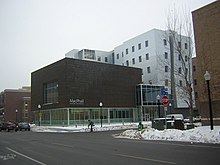The music of Minnesota began with the native rhythms and songs of Indigenous peoples, the first inhabitants of the lands which later became the U.S. state of Minnesota. Métis fur-trading voyageurs introduced the chansons of their French ancestors in the late eighteenth century. As the territory was opened up to white settlement in the 19th century, each group of immigrants brought with them the folk music of their European homelands. Celtic, German, Scandinavian, and Central and Eastern European song and dance remain part of the vernacular music of the state today.

The New England Conservatory of Music (NEC) is a private music school in Boston, Massachusetts. The conservatory is located on Huntington Avenue along the Avenue of the Arts near Boston Symphony Hall, and is home to approximately 750 students pursuing undergraduate and graduate studies, and 1,500 more in its Preparatory School and School of Continuing Education. NEC offers bachelor's degrees in instrumental and vocal classical music performance, contemporary musical arts, composition, jazz studies, music history, and music theory, as well as graduate degrees in collaborative piano, conducting, and musicology. The conservatory has also partnered with Harvard University and Tufts University to create joint double-degree, five-year programs.
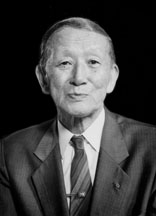
Shinichi Suzuki was a Japanese violinist, philosopher, composer, and educator and the founder of the international Suzuki method of music education and developed a philosophy for educating people of all ages and abilities. An influential pedagogue in music education of children, he often spoke of the ability of all children to learn things well, especially in the right environment, and of developing the heart and building the character of music students through their music education. Before his time, it was rare for children to be formally taught classical instruments from an early age and even more rare for children to be accepted by a music teacher without an audition or entrance examination. Not only did he endeavor to teach children the violin from early childhood and then infancy, his school in Matsumoto did not screen applicants for their ability upon entrance. Suzuki was also responsible for the early training of some of the earliest Japanese violinists to be successfully appointed to prominent western classical music organizations. During his lifetime, he received several honorary doctorates in music including from the New England Conservatory of Music (1956), and the Oberlin College Conservatory of Music, was proclaimed a Living National Treasure of Japan, and in 1993, was nominated for the Nobel Peace Prize.

KCMP is a radio station owned by Minnesota Public Radio (MPR) that broadcasts an adult album alternative (AAA) music format including a significant rotation of songs by local artists. Licensed to Northfield, Minnesota, and covering the Minneapolis-St. Paul market, the station's studios are located at the MPR Broadcast Center on Cedar Street in downtown St. Paul, while its transmitter is located atop the Vermillion Highlands near Coates. The Current is also broadcast on stations in Rochester, Duluth-Superior, Pasadena-Los Angeles, translators around Minnesota, and online.
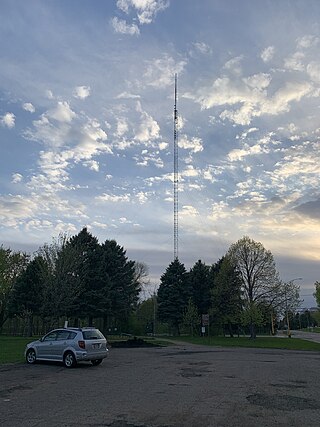
KBEM-FM is a public radio station broadcasting a jazz format based in Minneapolis, Minnesota, United States, the station serves the Minneapolis-St. Paul area. The station is operated by the Minneapolis Public Schools system and has been partnering since 1989 with the Minnesota Department of Transportation (Mn/DOT), providing traffic congestion reports for commuters in the Minneapolis-St. Paul metropolitan area. KBEM also broadcasts live headliner performances from the Twin Cities Jazz Festival each June. KBEM is a member of Minnesota's AMPERS network.
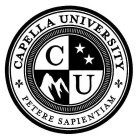
Capella University is a private for-profit, online university headquartered in Minneapolis, Minnesota. The school is owned by the publicly traded Strategic Education, Inc. and delivers most of its education online.

KTCZ-FM is a commercial radio station licensed to Minneapolis, Minnesota and serving the Minneapolis-St. Paul radio market and Western Wisconsin. KTCZ airs a hybrid modern adult contemporary radio format. The station is owned and operated by iHeartMedia and has studios and offices on Utica Avenue South in St. Louis Park.

William Mitchell College of Law was a private, independent law school located in St. Paul, Minnesota, United States, from 1956 to 2015. Accredited by the American Bar Association (ABA), it offered full- and part-time legal education in pursuit of the Juris Doctor (J.D.) degree. On December 9, 2015, Hamline University School of Law merged into William Mitchell College of Law, and became the Mitchell Hamline School of Law.
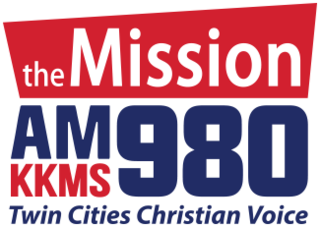
KKMS is a commercial AM radio station licensed to Richfield, Minnesota, and serving the Minneapolis-St. Paul radio market. It is owned by the Salem Media Group and broadcasts a Christian talk and teaching radio format. The transmitter and radio studios are on Cliff Road near Minnesota State Highway 77 in Eagan.
Anoka-Ramsey Community College is a public community college in Cambridge and Coon Rapids, Minnesota. Founded in 1965, the college annually serves more than 12,500 students as they pursue associate degrees that transfer as the first two years of a bachelor's degree, as well as certificate programs. Anoka-Ramsey Community College is a member of the Minnesota State Colleges and Universities System. The college also focuses on providing professional development and continuing education programs for working adults. Over 5,570 registrants enroll in these courses each year.
Merit School of Music is a nationally accredited music school and nonprofit organization located in Chicago, Illinois, United States. Merit focuses on high-quality music instruction for kids and teens, offering group music classes, private lessons, and Conservatory level instruction. Merit has branches in Chicago's West Loop, Old Town, and South Shore neighborhoods, and provides in-school instruction at schools across Chicagoland.

Northwestern Health Sciences University (NWHSU) is a private university focused on alternative health care and located in Bloomington, Minnesota. The university has educational programs in chiropractic, Traditional Chinese medicine, acupuncture, therapeutic massage, Allied health professions, and human biology. The university was founded in 1941 by John B. Wolfe, DC.
FAIR School Crystal is a magnet school located in Crystal, Minnesota, that specializes in the Fine Arts and educates students in the 4th through 8th grades. FAIR is part of the Robbinsdale Area Schools School District, with its partner school FAIR School Downtown, located in downtown Minneapolis, Minnesota, which is K-12. It was once part of its own independent school district called WMEP that came under fire around 2013 surrounding several controversies. Of the school's 550 students, 218 come from Minneapolis Public Schools, 74 come from Robbinsdale Area Schools, 49 come from Wayzata Public Schools, and the remainder come from other metro districts and a few other school districts.

The Mill District is an redeveloped former industrial within Minneapolis, Minnesota, United States, and a part of the larger Downtown East neighborhood. The area contains several former flour mills left over from the days when Minneapolis was the flour milling capital of the world. With almost none of the mills still active, a number of these have been converted into condominiums leading to a revitalization of the neighborhood.
Minnesota Center for Book Arts (MCBA) is the largest and most comprehensive independent nonprofit book arts center in the United States. Located in Minneapolis, Minnesota, MCBA is a nationally recognized leader in the celebration and preservation of traditional crafts, including hand papermaking, letterpress printing and hand bookbinding, as well as the use of these traditional techniques by contemporary artists in creating new artists' books and artwork.

Downtown Saint Paul is the central business district of Saint Paul, Minnesota, United States. Its boundaries are the Mississippi River to the south, University Avenue to the north, US 52 to the east, and Kellogg Boulevard to the west. It is bounded by the Dayton's Bluff, Summit-University, West Seventh, Frogtown, West Side, and Payne-Phalen neighborhoods. The West Side neighborhood is on the other side of the river, and can be accessed via the Robert Street Bridge or the Wabasha Street Bridge. Interstate 35E and Interstate 94 run through the north side of the neighborhood, providing a separation between the Minnesota State Capitol and other state government buildings with the rest of downtown.
The University of Minnesota School of Nursing is the nursing school of the University of Minnesota that was founded in 1909. It is the nation's first and oldest continuously operated university-based school of nursing. It has historically been an innovator in nursing, it was the first university to create a Bachelor of Science in Nursing and it graduated the first bachelor's degree nurses in 1909. It is ranked amongst the nation's top nursing schools, it has a research budget of $6 million each year, and produces more than half of the faculty in Minnesota's public and private nursing schools and advanced practice nurses. College courses and continuing education are offered at the University of Minnesota East Bank in Minneapolis and at the University of Minnesota, Rochester campus in Rochester, Minnesota.
Augsburg Park Library is a public library in Richfield, Minnesota. A Richfield branch library of Hennepin County Library has existed in various buildings in since 1951.
Lynn Freeman Olson was an American composer. His music is used primarily for teaching the piano to youngsters. He was a popular presenter at workshops for piano teachers. He composed some music for radio and television programs for children. He authored college textbooks on piano pedagogy and edited collections of classical piano solos. He was himself a piano teacher and had many students over the years. He died of cancer at the age of 49. Decades after his death, his piano compositions are still regularly played at recitals and contests.

Agnes Moore Fryberger was an American music educator, lecturer, and author, as well as a clubwoman. She was a pioneer in the northwestern U.S. in lecture recitals on opera. Fryberger served as the Educational Director of the Minneapolis Symphony Orchestra (1924-25), and of the St. Louis Symphony Orchestra (1926-30). She was the first director of music appreciation at the University of Louisville. Her book, Listening Lessons in Music (1916), used in France, England, and the Philippines, was the first text that incorporated phonograph records into a school lesson's grading process.



